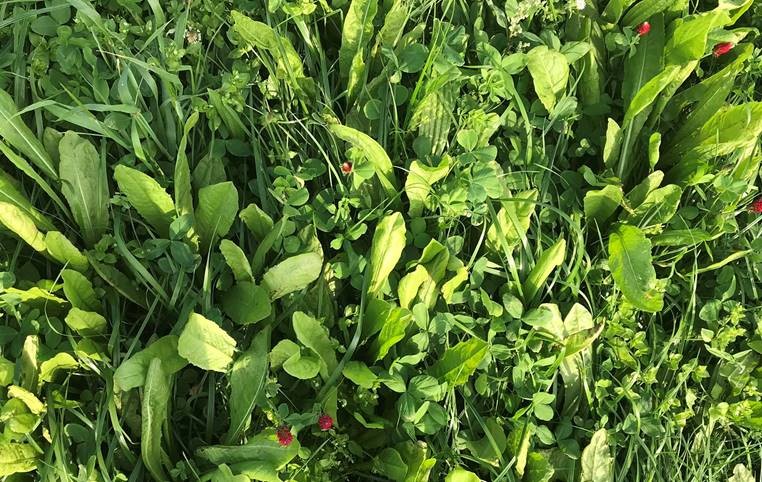Herbal Leys – The Challenges
7 February 2024This articles follows on from Herbal leys - what to consider in selecting a mix.
Herbal leys contain a variety of species of grass, legumes and herbs and as such they cannot be managed in the same way as the typical perennial ryegrass grass/clover ley. When speaking to dairy farmers who have implemented herbal leys into their rotation, some challenges are common:
- Species and variety selection
- Establishment
- Maintenance
1. Species and variety selection
The first challenge that is presented is in choosing the species and varieties of grasses, herbs and legumes that you will incorporate into the herbal ley. This will involve some trial and error, and the species used need to be able to persist under your management regime, whether it is grazing, cutting or a combination of both. In addition, the growth rates of the different varieties included in the seed mix should be similar to avoid faster growing species from smothering slower growing species.

2. Establishment
Unsuccessful establishment for the whole of the herbal ley or for a particular species is a common challenge. There are several factors to consider around establishment, including soil nutrition, timing and cultivation method.
With regards to soil nutrition, pH should be over 6.0 as a minimum but ideally around 6.5. In addition, phosphorus (P) and potassium (K) levels should be within the optimum range of 4.5 - 9.4mg/l and 76 – 140mg/l respectively. Herbal leys can be sown when the soil temperature is above 8°C and there is moisture available in the soil. Typically late summer and early autumn sowings are more effective.
Broadcasting or shallow drilling seed into a consolidated, firm, fine, and weed-free seedbed is the most effective way to establish a herbal ley. However, you can also over-sow an existing sward, although this is less reliable. Depth of sowing is crucial and small seeds should not be sown deeper than 1cm.
3. Maintenance
Maintaining the herbal ley over multiple years is the most common challenge faced by producers. Many herbal leys struggle to maintain their production and species diversity. Grazing or cutting herbal leys within target heights/residuals is key to their effective management. Herbal leys persist best under a rotational grazing regime, where the entry cover is 4,000kg DM/ha, and allow cattle to graze down to a residual of 1,800kg DM/ha (minimum residual of 7 - 10cm).
In addition, weed control constitutes a significant issue as sprays which target weed species, such as docks and thistles, will also kill the herbs and legumes within the swards. Many soils on dairy farms will have seeds of various weed species in the seed bank in the soil. Therefore, allowing weeds to germinate in a fallow soil, before being sprayed off or turned over before sowing the new herbal ley can help to reduce the number of weeds in the seed bank.
In an established herbal ley, there is no easy solution to this challenge. Routine spot spraying and hand rogueing of weeds along with ensuring optimal plant nutrition and grazing/cutting within target residuals all help to keep weed populations down.
Further information
Defrafarming- Create and maintain herbal leys
Soil Association - Herbal Leys 'How to' Guide
AHDB - Where do herbal leys sit in a modern dairy system
james.orr@sac.co.uk; 01292 525010
Sign up to the FAS newsletter
Receive updates on news, events and publications from Scotland’s Farm Advisory Service

